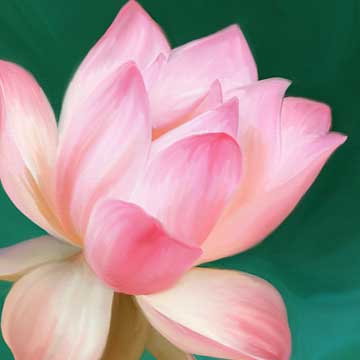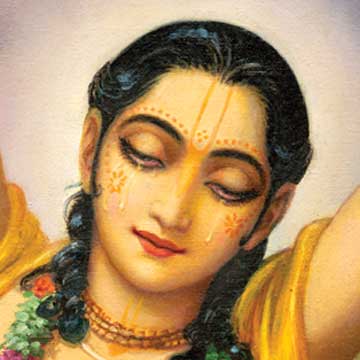What University Shall We Attend?
- Details
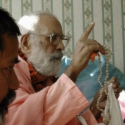
In our morning class we were discussing the eighth sloka of Srila Rupa Gosvami's Nectar of Instruction. In that regard we have explained, and we have also heard in the explanation of Srila Bhaktivedanta Svami Maharaja: we should know who Caitanya Mahaprabhu is, and for what purpose, for what mission, He descended from the spiritual realm...
Welcome To The Tour
- Details
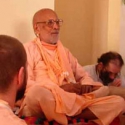
What was the mission of Sri Caitanya Mahaprabhu, Srila Rupa Gosvami, Srila Bhaktivinoda Thakura, Srila Bhaktisiddhanta Sarasvati Thakura Prabhupada and Srila Bhaktivedanta Svami Prabhupada? They all had the same mission, and I am also coming for this same preaching mission...
An Istagosthi - The Process Of Initiation
- Details
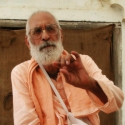
To initiate is a very weighty responsibility. Still, to continue the strict line of our Sampradaya, we are doing so. I have permitted my disciples like Madhava Maharaja, Tirtha Maharaja, Aranya Maharaja, and others to give mala. If they try to give initiations however, then after some time their disciples will have no honor for them, and they will also try to initiate prematurely. So this is not a good process...
The Highest Summits of Prema
- Details
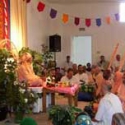
What kind of krsna-prema do we want? Not the prema of Hanuman or the Pandavas or even Uddhava. We will not reject their prema; we will offer pranama to it. But we do not want it. What do we want? Do we want to serve Krsna as Srimati Radhika is serving Him? No. We also offer so many pranamas to that prema. Our goal is to serve that prema, but we do not desire it ourselves...
The Hunger of Krsna
- Details

..to have a desire like, “I am serving Krishna, so I must be happy.” To serve Krishna for your happiness is not bhakti. If you have an appetite to serve Krishna and are worshipping Krishna, then you must realize ananda (bliss). Try to go deep. Desiring your own happiness is not bhakti...
Attachment For Radha
- Details

I will now speak about the fifth stage of bhakti, called krsna-asakti. Suppose a man has left his wife, children, worldly position, and so on, but he has not yet come to the point of ruci, what to say of asakti. He must fall down, and in fact, he is already fallen. Whether he is a sannyasa, a brahmacari, or in any other asrama, it does not matter. External dress is not important; mood is important...
The Satisfaction of Krsna
- Details

I explained before, that we should not try to always remember Krishna as the Supreme Personality of Godhead. What is the harm in remembering Him as so? If we think of Krishna as the Supreme Personality of Godhead, having innumerable attributes, and opulence, then what is the harm? It has been told in Sri Caitanya Caritamrita: yaha hoite Krishnera lage sudhrda mana...
A New Book Distribution Technique: Prema
- Details
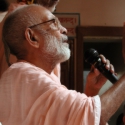
I want to say that the distribution of books is a main part of preaching. Although we do a lot of preaching, it may be that much of it will 'evaporate in the air'. In book publication and distribution, on the other hand, this preaching is solid. We are now publishing many books, and, as you are very inspired to distribute the books of Srila Swami Maharaja, your Srila Prabhupada, I want that you will also distribute my books, which are complementary to his...
A Note on Gita Govinda and Gaura-Vani
- Details

"I will have no further relation with Krsna. I will not go to meet Him." Sri Krsna was upset and He therefore sent a gopi to Srimati Radhika to pacify Her. The gopi requested Her: "Sarasa vasante." New leaves have sprouted on all the trees. Cuckoos are singing...
The Constitutional Position Of Gadadhara Pandit
- Details

Srimati Radharani was like a guru. In the form of Gadadhara Pandit, She was watching Krishna in the form of Sri Caitanya Mahaprabhu, to see whether He was playing Her role properly or not...
We Are One Family
- Details

We should not always remain in the kanistha-adhikari stage. There should be a way to go up to something superior, but our minds will not go there. We should try to make advancement through someone who is superior, through those who are practically serving, whose minds are there, who know Prabhupada’s mood, and who know the very deep process of Srila Rupa Gosvami and Srila Raghunatha dasa Gosvami that Srila Bhaktivedanta Swami Maharaja has written about in his books. We should try to go very deep...
Pastimes of Srila Bhakti Prajnana Kesava Gosvami Maharaja
- Details

Once, after taking the permission of his Guru Maharaja, Srila Bhaktisiddhanta Sarasvati Thakura, my Gurudeva went to visit Srila Gaura Kisora dasa Babaji Maharaja. At that time, Babaji Maharaja had closed the door of his bhajana kutir, which was a municipal outhouse. He had locked himself inside and refused to meet anyone...
The Glories of Hanuman
- Details

Now we are coming to our subject - where we left off in Badger. Why do we prefer Ambarisa Maharaja over Prahlada Maharaja? Prahlada Maharaja is a siddha-bhakta and parama-mahabhagavata (a perfected devotee situated at the stage of prema, love of God), and Ambarisa Maharaja is a sadhaka-bhakta (a practitioner at the stage of bhava-bhakti) So why do we want to follow Ambarisa Maharaja?
Taste
- Details

The fourth yam (stage or period) of sadhana is ruci, taste. In this stage of ruci, especially the second kind of ruci, it does not matter whether or not the Deity is decorated, or whether or not His face, mouth, hands, and so on are complete. Even though Jagannatha has only two round eyes and no hands, Caitanya Mahaprabhu saw Him as Krsna and cried out to Him, "O Vrajendranandana, I want to meet You. My heart is breaking...
Na Danam Na Janam
- Details
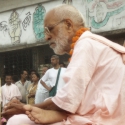
Caitanya Mahaprabhu is weeping and uttering this, and the other jewel-like verses of Sri Siksastakam. Everything - all moods and all objects of our life - are in these eight slokas. All the Vedas are present there, Srimad-Bhagavatam is there, and Caitanya-caritamrta and the essence of all the books of our Gosvamis are there. But how can you realize this?
Cleansing The Dust From The Heart
- Details
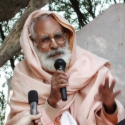
I was telling yesterday that our ears, nose, tongue, and all of our senses are mundane; but Krishna's Name, krsna-katha, krsna-seva, and all things relating to Krishna are transcendental - purely transcendental. How then can these mundane senses touch the transcendental Name and other items of bhakti?
Page 13 of 48


